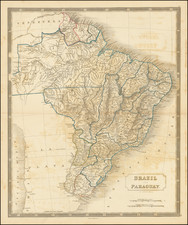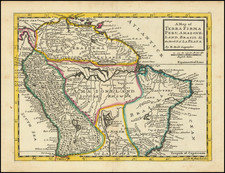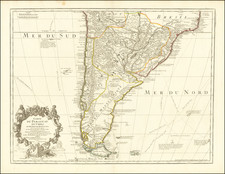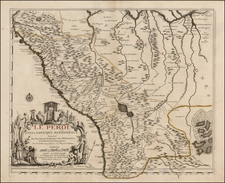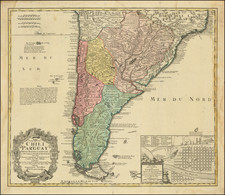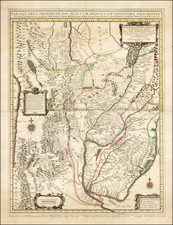Rare late 19th Century map of Bolivia, illustrating Bolivia's trade and resource distribution at a time when the country was emerging from a sequence of conflicts that shaped its boundaries and internal structure.
Bolivia's 19th-century history was marked by pivotal events, including the War of the Confederation (1836-1839) against the Peru-Bolivian Confederation and the subsequent War of the Pacific (1879-1883), which resulted in the loss of the Litoral Department to Chile and with it, Bolivia's access to the Pacific Ocean. This map, therefore, embodies a post-war Bolivia, seeking economic recovery and stability through its rich natural resources. The cartographic detail captures not only the physical terrain but also the vital mining centers such as Potosí, known historically for its massive silver production since the colonial era, and Oruro, emerging as a tin mining hub towards the late 19th century.
The map reveals the extensive network of transport routes integral to Bolivia's economy, including the nascent railway lines. The map's legend delineates symbols representing operational railroads, offering insight into Bolivia's infrastructural developments following the 1873 inauguration of the Antofagasta to La Paz railway line. The proposed lines indicated on the map reflect the anticipation of further integration into the global economic system through improved connectivity.
The map also denotes administrative divisions, such as departments, provinces, and their capitals, providing a comprehensive view of Bolivia's political geography as it stood following the 1880 Treaty of Valparaiso with Chile. This treaty formalized the cessation of the coastal territory, a loss depicted in the map's boundaries. Additionally, the map indicates the location of indigenous villages, missions, and towns, illustrating the demographic distribution and the lingering influence of Spanish colonization on settlement patterns.
In detailing Bolivia's commercial landscape, the map's symbology and annotations emphasize the diversity of agricultural production, with red characters indicating mining regions, including:
- Argent: Silver
- Cuivre: Copper
- Étain: Tin
- Platine: Platinum
Rarity
First issued in 1887, the map is very rare.
OCLC locates the following examples.
- 1887: State Library of Berlin, Gotha University, Library of Congress, National Library of Spain
- 1888: Bibliotheque National de France
- 1890: Library of Congress











